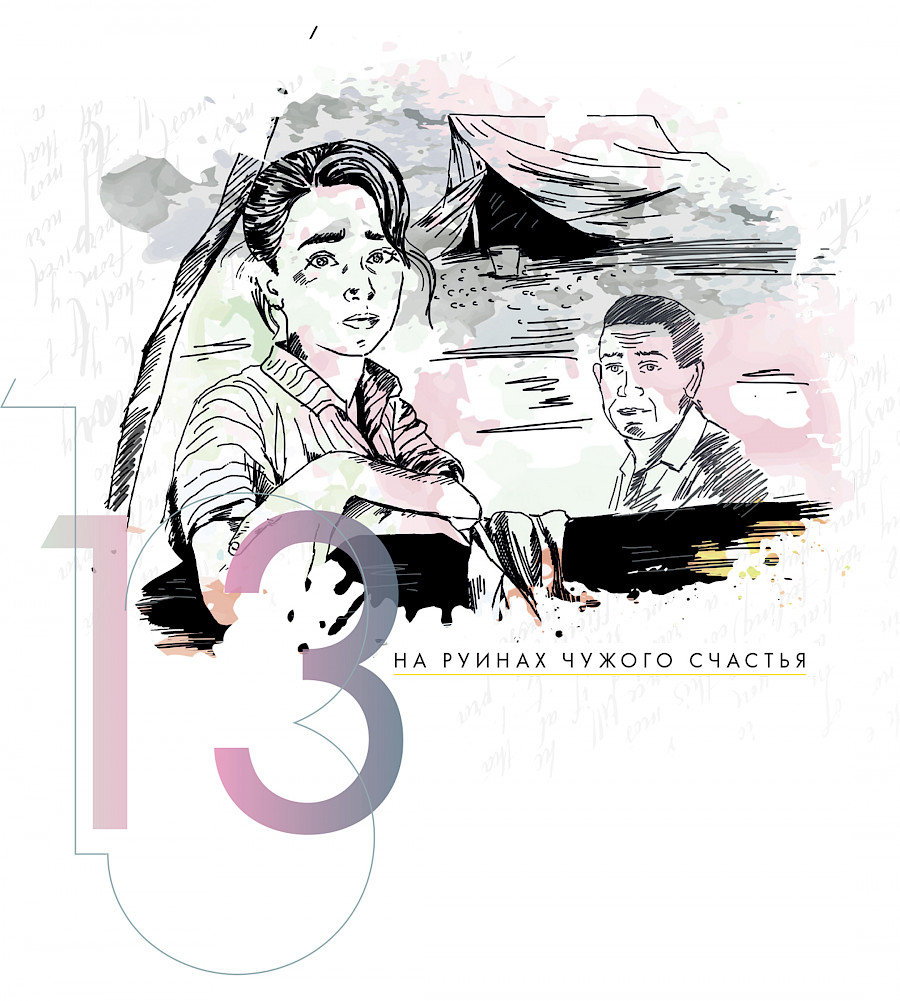
For more than a quarter of a century, as much as 20% of our lands still remain under enemy's occupation, and both young soldiers and experienced generals continue to die on the line of contact. If Baku is called the heart of Azerbaijan, then Karabakh is its soul. This blessed land has given the world dozens of scientists, philosophers and poets who have gained fame throughout the world, especially in the Islamic East. These are Mohammed Gharabaghi, a philosopher and writer of the 16th century, whose works are kept in the Cairo Library. This is the 18th-century poet Molla Panah Vagif, the chief vizier of the Karabakh Khanate. This is the daughter of the Karabakh khan Agabeim-aga, who became the main wife of Fath Ali Shah Qajar and glorified her native Karabakh in her remarkable bayati.
This is her niece Khurshidbanu Natavan, who checkmated the bridled from delight Thomas-Alexandre Dumas, who told about his adventures in the Caucasus in his book "Voyage to the Caucasus"... In the 19th century, Shusha became the center of culture of the Caucasus. Karabakh became famous as the birthplace of mugham, a unique genre of song art, included by
UNESCO in the List of Intangible Cultural Heritage.
This land gave the world Uzeyir Hajibeyli, Muslim Magomayev (senior), Bulbul, Gadir Rustamov, Khan Shushinski, Arif Babayev, Niyazi – geniuses of Azerbaijani classical music...
How can one argue about Karabakh's affiliation with Azerbaijan when there is such an argument as culture on our side?
Nobody's verbiage, no attempt to rewrite history will be able to hide the truth. The number of silent, but irrefutable evidence of the presence of ancient Azerbaijani culture on this enemy-flouted land is countless...
The list given here of what we lost with Karabakh is very subjective and, of course, incomplete. In my defense I'd like to say, that it was painful to make it. And yet this pain goes hand in hand with hope.
We will see you again, Karabakh!
Khankendi
329 km from Baku
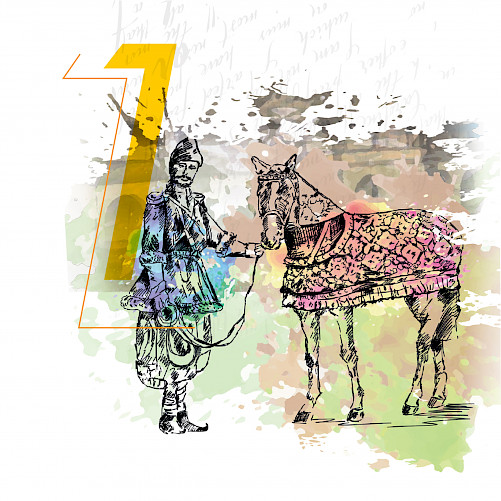
The pounding of the gilded gorgeous horses of the Karabakh suit has long been spread along the green fields of this city. The city, lying on picturesque mountain slopes ten kilometers from the capital of the Karabakh Khanate Shusha, since the end of the 18th century has served as the winter residence for the local aristocracy, including the Khan's family. The son of Panah Ali Khan Mekhtikuli Khan, as a gift to his wife Peridzhan Begim, built a large settlement here, and the people gave this place the name Xan kəndi – Khan's village. However, this place is mentioned in historical manuscripts of the early Middle Ages. Not so long ago, burials with inscriptions dating from the beginning of the 15th century, founded 800 years ago Muslim cemetery, sanctuaries "Room of Mahammad Aga", "Darili Piri" and "Tree of Sorrow" could be found in the Khan Village...
In 1923, after the creation of the Nagorno-Karabakh Autonomous Region as part of the Azerbaijan SSR, the city was renamed after the executioner of the Azerbaijani people Stepan Shaumyan, and only in 1991 its original name was returned. In the 20th century, Khankendi experienced a huge rise, turning from a recreation area into a large industrial and cultural center. A silk factory famous for the entire South Caucasus, a concrete factory were working here, citizens were engaged in winemaking, furniture building, shoemaking... More than half of the industrial production of the entire region in Soviet times was produced in Khankendi.
Khojaly
375 km from Baku
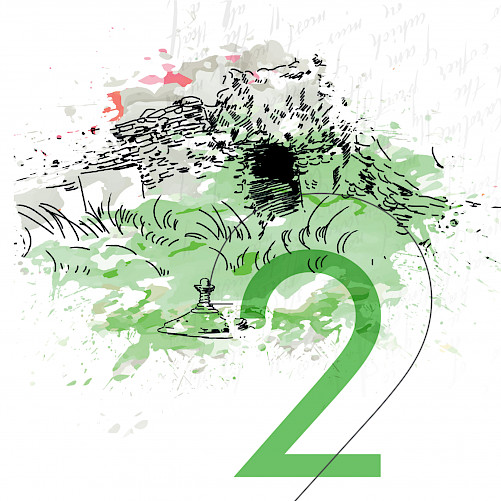
Just ten kilometers northeast from Khankendi is the mountainous settlement of Khojaly, almost half of which (40%) is covered with forests. Life here has always been vibrant, locals harvested crops as much as three times a year: grapes and potatoes. At a Muslim cemetery that appeared in Khojaly eight centuries ago, graves with bizarre ancient inscriptions could be found; now, unfortunately, they are irretrievably lost due to the fault of Armenian vandals. In the arms of the mountains, in an endless alpine valley near the city, scientists excavated more than a hundred of the oldest mounds. These burials varied not only in dating - from the late Bronze Age to the early Iron Age, but also in size – from small to large. And to the west of the Khojalychay River in proud solitude flaunted almost 16 meters high double-headed Khacha-tepe mound.
During excavations, not only household items, jewelry and tools were found: it turned out that in one mound was buried...a bull, whose skull was decorated with bronze headband. So many questions could be answered, if we had the opportunity to study these mounds closely!
*On February 25-26, 1992, Armenian armed groups massacred civilians in the city of Khojaly. 613 people died (including those who froze on the way), among which were 63 children, 106 women, 70 elders. This is the largest and most brutal bloodshed in the entire time of the Karabakh war.
Shusha
373 km from Baku
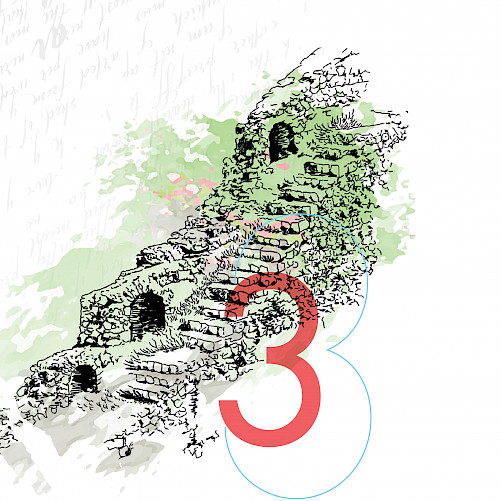
Mugham sounds in the ears, and the gates of the fortress stand in front of the eyes, meeting with the inscription in Cyrillic: Shusha... This city is special not only for Karabakh Azerbaijanis, but also for the entire Azerbaijani people. Founded in the middle of the 18th centuryby Panah Ali Khan, it was first named Panahabad; the name "Shusha" that is, "glass" in Azerbaijani, it received for the amazing purity and transparency of mountain air. Shusha is the palace of Panah Ali Khan, Juma Mosque, Govher-aga Mosque, the houses of Khurshidbanu Natavan and Uzeyir Hajibeyli, the tomb of Molla Panah Vagif, the Mint, Jidir Plain...
But as visions from oriental fairy tales, a maze of rooms of the Palace of Karabakh Khans flashes before your eyes. Important state meetings were held here, and in between there was a serene life of the Khan's family. We can no longer feel the smoothness of silk fabrics embroidered with decorative knit, nor the tenderness of Karabakh carpets with unique life-affirming ornaments left in the palace... And yet the impregnable and beautiful Shusha, the fall of which seemed unthinkable to all of us, was and will forever remain the citadel of Azerbaijani culture. And no one can erase, nor rewrite its history again, even if today this fortress meets visitors with an alien to it inscription.
Lachin
414 km from Baku
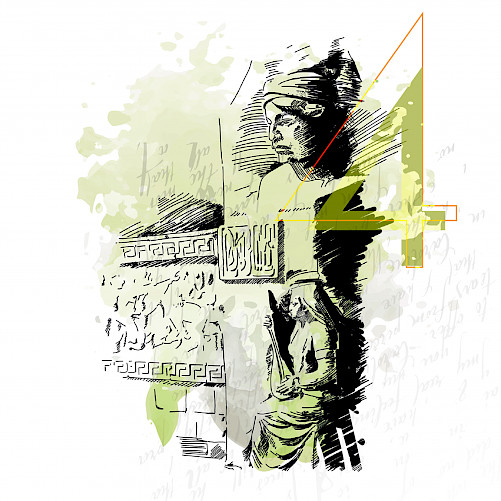
Mighty red oaks, listed in the Red Book relict iron tree, healing ice springs – all of them witnessed the heyday and fall of Lachin... Reader, this story will be told not to the classic Karabakh trio, but to the minor notes of the saz. 17th century, Sari Ashug Abdullah (folk poet-singer) is on his way to Karabakh, or rather, to Lachin. The plot is painfully familiar: he accidentally meets the lovely girl Yakhshi from the village of Magsudlu, and this, of course, is mutual unearthly love at first sight. However, the young lovers are not meant to be together: a mountain girl would never be married to a foreigner. Yakhshi withers, like a Karabakh orchid, losing strength day by day, and dies without knowing the arms of her beloved, and Sari Ashug will spend the bitter days he has left by her grave. Verse by verse, weaving words, he will compose songs to the glory of his beloved, without putting his saz from his hands. Feeling the end coming closer, Sari Ashug bequeathed to bury him next to his lover, facing her, and not the sacred Kaaba. Like that a mausoleum was erected to the poet, comparable to the legendary Majnun, nicknamed among the people "Ashug oylagli" – "Abode of the ashug".
Khojavend
334 km from Baku
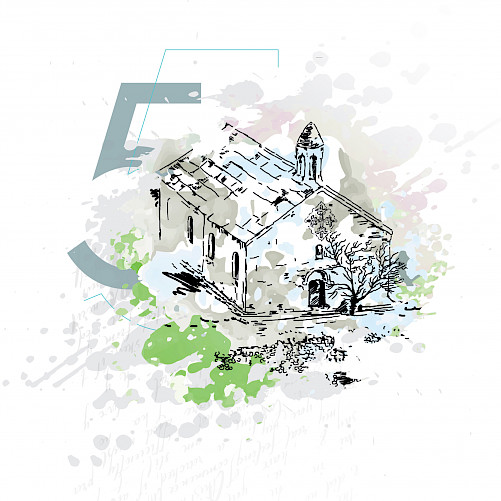
Imagine what a magical atmosphere reigned in Khojavend, a small region literally dotted with sanctuaries: the Christian White Church, Arushul Castle, the Seyid Rza Dome... The sound of the ringing bell and the azan from the sanctuaries covered with forests, from time to time spread across county like a free wind. The walls of the sanctuaries belonging to the Albanian period of our history were decorated with fine carvings. By architecture, these holy houses of our people are always easy to distinguish from the Gregorian churches, the fact which is so passionately denied by representatives of the neighboring country who want to appropriate all the credit of other's history. So, in front of you is a difficult path to the mountain, to the sanctuary of the 17th century of unimaginable beauty. Its name Ziyarat means "place of worship". And here you are on top. In front of you there is a stunning view: snowy peaks, flowering meadows – seems like you can reach the sky with your hand! You feel the breath of the universe and the presence of God. And it's not so important how you call Him...
Kalbajar
445 km from Baku
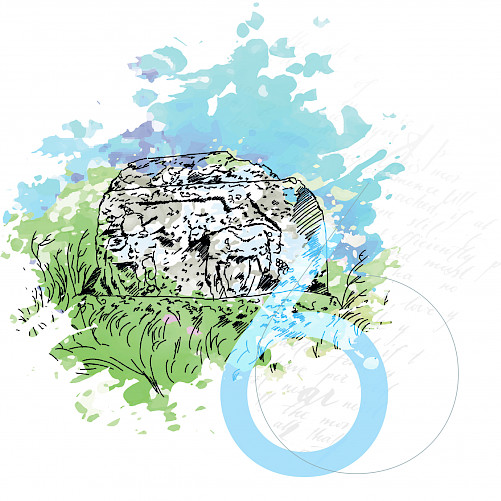
Another unsolved page of the history of Azerbaijan is Kalbajar, an ancient region with prehistoric caves, fortresses, shrines, as if man-made rocks. An ancient land that hides many amazing legends and untold riches. And if Khojavend is called the second Khojaly by a tragic parallel, then Kalbajar is named the second Gobustan for a reason.
One of the 28 stone fragments found here depicts human figures inside the oval. Since the looks of people carved on stone are directed up, scientists suggest that the picture reflects the very first ideas of a man about the universe. Maybe somewhere in the abyss of space you should look for an answer to the question of how they delivered huge blocks in the 6-7th centuries for the construction of the grandiose Hudaveng complex, which varies so much with all the other monuments on this earth? The complex has survived more than one generation, both river stone and wood were used for its construction. Between these walls, hand-decorated in the 13th century with oil paintings and calligraphic inscriptions, the wife of the ruler Khasan Jalal, Mina Khatun was buried...
Agdere
358 km from Baku
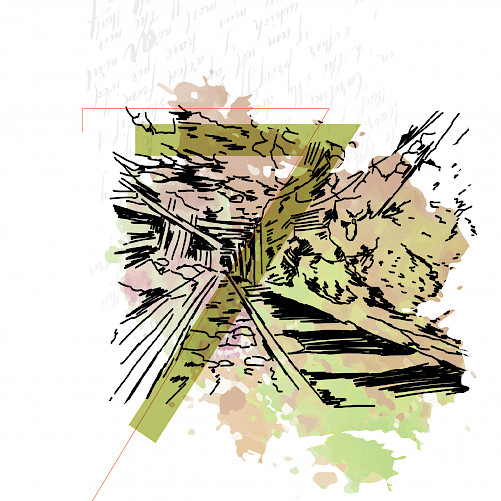
Agdere is another vivid answer to the question of why exactly Karabakh. Copper, limestone, zinc, iron, obsidian, marble, and most importantly, silver and gold. There are 155 fields of mineral resources of various types, five of them are gold. Agdere hid Azerbaijani gold in Gizilbulag and Dzhanyatag – Gyulyatag, lead and zinc in Mehman, copper in Demirli... Gizilbulag is one of three deposits with documented reserves. Filigree shebeke technique, lacy badamli, piala-zeng earrings, massive moon-star breastplate – there was a time when each bride dreamed of traditional jewelry made of real Azerbaijani gold! And we don't even expect how much wealth still hides in the subsoil of this abundant land, which the invader shamelessly draws! For a reason in 2012, a foreign company invested $80 million in the occupied lands of Agdere, opening a mining plant. Indeed, the bowels of Karabakh can carry on them the economy of not only the territories taken from us, but also the entire occupying country.
Agdam
362 km from Baku
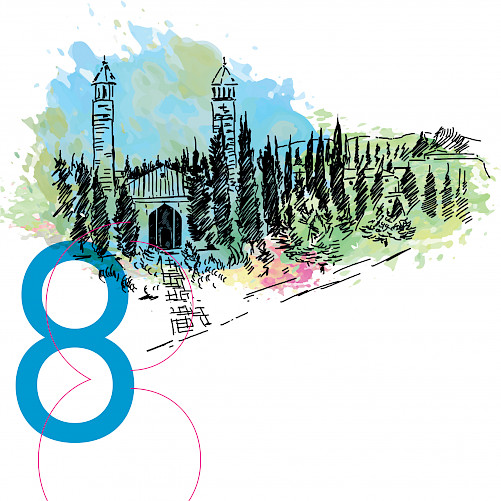
Ghost town... Now only the souls of the innocently killed wander along its streets: here, in Agdam, in 1988-93, the largest number of shehids died. Once cotton was grown here, silk carpets were woven and the famous cognac was poured. It was in Agdam that even during the years of Soviet power the azan from the Juma mosque sounded. Now it no longer calls Muslims for Friday prayer: Armenian vandals use the mosque as a cattle corral. To rebuild his new abode, the enemy still destroys the abandoned city. Mosques and caravan palaces, caves and shrines are destroyed, the mausoleum of Panah Ali Khan, the father of Karabakh, was ruined... In Agdam was a unique Bread Museum, where many valuable books and manuscripts were stored, where you could see ancient grain processing tools – from threshing boards to hand mills, as well as miraculously preserved samples of different, but most importantly, rare crop. Today this museum lies in ruins...
Jabrayil
338 km from Baku
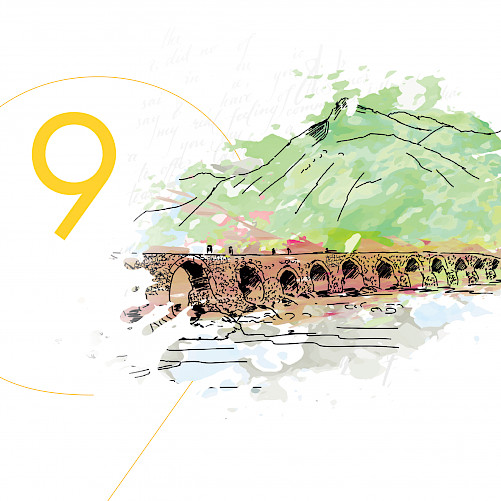
Century after century Azerbaijan was tormented by conquerors, our region is too attractive in all respects. Fate was often unfavorable to it... Since 1813, we have been looking at South Azerbaijan with longing and trepidation, and southern Azerbaijanis dream of coming to their historical homeland, whose independence is pride for every Azerbaijani. It was Jabrayil and Khudaferin bridges laid across Araks, that starting from the 7th century, connected blood brothers who lived on different sides of the "separating river". As if the Almighty himself was determined to lay bridges of unity here: the rocks across the channel became natural supports, and the high banks protected the bridges from floods.
Khudaferin bridges connected not only the north and south of Azerbaijan. Merchants carried the rarest goods from China and India, and crossing from the south coast to the north, they moved further towards Europe. Jabrayil, like other settlements that at all times arose along caravan routes, was a trading city and flourished. Once upon a time there were numerous caravan palaces in it, so that a tired traveller could always find shelter and food here...
Fizuli
334 km from Baku
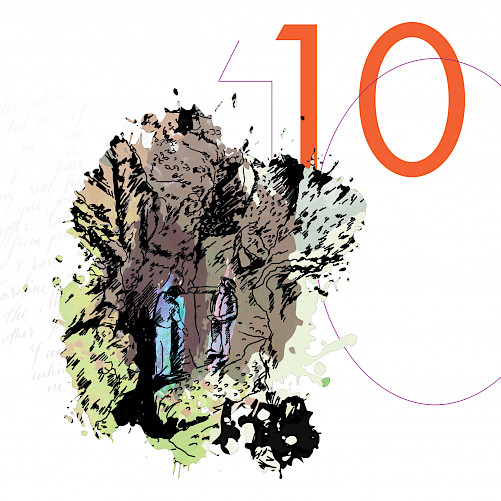
In April 1959, in commemoration of the 400th anniversary of the birth of the great Azerbaijani poet Muhammad Fizuli, this city was renamed in his honor, and the district became Fizuli. But these lands were inhabited in the prehistoric era, they served as a haven for early humans. In 1968 in the Azikh cave complex, on the left bank of the Guruchay River, the lower jaw of the predecessor of the Neanderthal, called azikhanthropus, was discovered; this is just the fifth find in the world to confirm that Neanderthals were not the first people on Earth. Unfortunately, scientists managed to study only five exits of the cave out of seven. More than three thousand stone tools and over thirty thousand fossilized bones of animals – saber-toothed tigers and cave bears were collected here. It is precisely concluded that bonfires in Azikh were burning 600-700 thousand years ago.
The ancient bridges of this area connected the entire region. Believers prayed in ancient mosques, at the shrines they asked for a miracle, including in the mausoleum of Mirali (17th century). In 90 libraries over the centuries, prominent scientists and thinkers created their works...
Gubadli
403 km from Baku
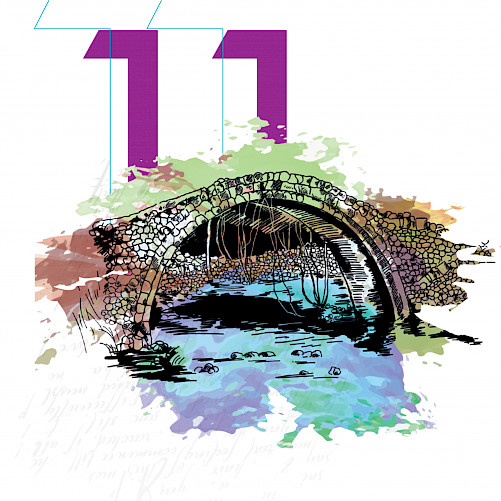
Gubadli district is covered with thick green forests, and the healing springs here hit from under the ground. It is simply covered with shrines: cave temples of the 4th century, fortresses of the 5th century, 4th century sanctuary "Gavur gorge", monuments of the 5th century "Galali" and "Goygala", "Demirchilar Turbesi" of the 14th century, tombs of the 14-17th centuries... Here is the homeland of many prominent poets, writers, philosophers, religious, public and state figures. In the 18th century, the famous religious figure Mirza Mehkti Khazani was born and lived in Gubadli. And in 1854, the people's hero Gachag Nabi, the local Robin Hood, saw God's light here. In the 19th century, philanthropist and benefactor Haji Badal lived in the village of Demirchilar, Gubadli district. Having a superior talent of the organizer, he worked tirelessly, gave all his power to the development of his native land. Haji Badal united 15 villages and built a bridge over the Agarchay River, named after him. For the construction of the bridge was used stone decorated with ornaments, lime and... egg yolks! Surprisingly, this rather massive structure was not afraid of the mountain river, and stood without additional supports.
Zangilan
385 km from Baku
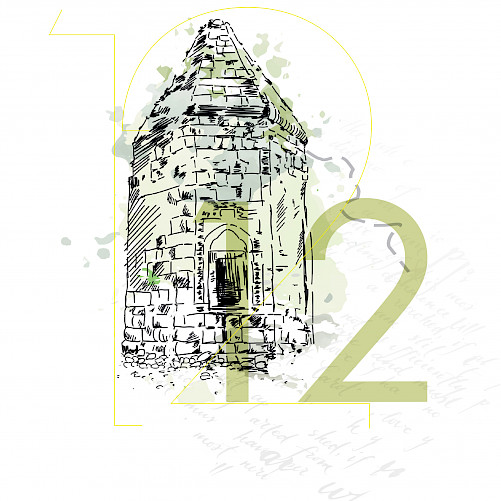
This southern part of the most ancient Azerbaijani land Zangezur is more than 1,500 years old. Zangilan borders in the west with Armenia, in the south with Iran. At an altitude of 2000 meters above sea level, green meadows open up, here is the second largest in Europe woodland of chinar (sycamore). Only the water splash falling from the spring breaks the silence, healing herbs bloom abundantly everywhere in high mountain meadows... Zangilan is considered one of the oldest human settlements: karst caves are hidden on both sides of the Okhchuchay River in generous greenery. And in the village of Sharifan, many archaeological excavations were carried out: these places have long been inhabited. The remains of a tomb with a shallow altar and an underground part built at the junction of the 13th and 14th centuries were also discovered there. The walls, made of smoothly polished stone slabs, are decorated with triangular patterns.
In the center of Zangilan was the Imam Huseyn mosque, erected in one of the brightest periods of Azerbaijani history – during the Safavid state.
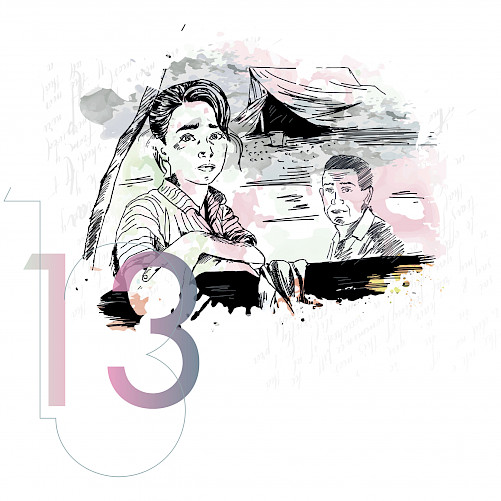
On the ruins of someone else's happiness
And yet the main thing that we lost with Karabakh are not palaces, mosques, mausoleums... The biggest of our losses should be considered the destroyed happiness of simple people who have lost shelter, family and the very opportunity to live in their native land. People who did not expect a traitorous attack, who peacefully slept in their homes on a cold winter night - fathers, mothers, children, the elderly, overnight became exiles, or even victims of merciless genocide. Official annals from year to year stamp new figures: 27, 28, 29... For us, each year of occupation is another 365 days of indifference of the world to our misfortune. The war in Karabakh remains an eloquent act of cunning of neighbors, blatant atrocities against unarmed people, ethnic and cultural genocide, which to this day has not been properly evaluated around the world.
P.S. All the monuments of Azerbaijan's ancient culture, mentioned in these short stories are now either in ruins or already irrevocably erased from the face of the earth.



